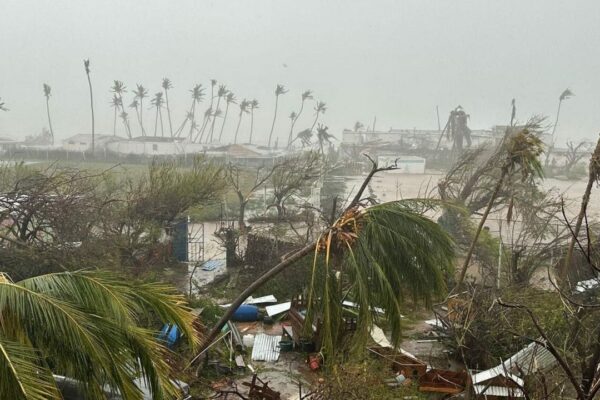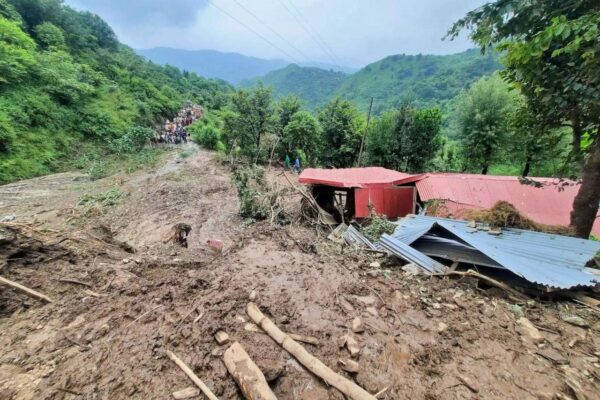Assam Flood Displaces Thousands, Kills Hundreds of People and Wildlife
Every year, floods upon the arrival of monsoon season, displace and kill many people and animals in the Indian state of Assam. However, this year Assam is fighting two disasters at once – floods and coronavirus. Most of the rivers in the state are in spate, and the Indian Meteorological Department has predicted that the situation is likely to worsen as more heavy rains will follow.
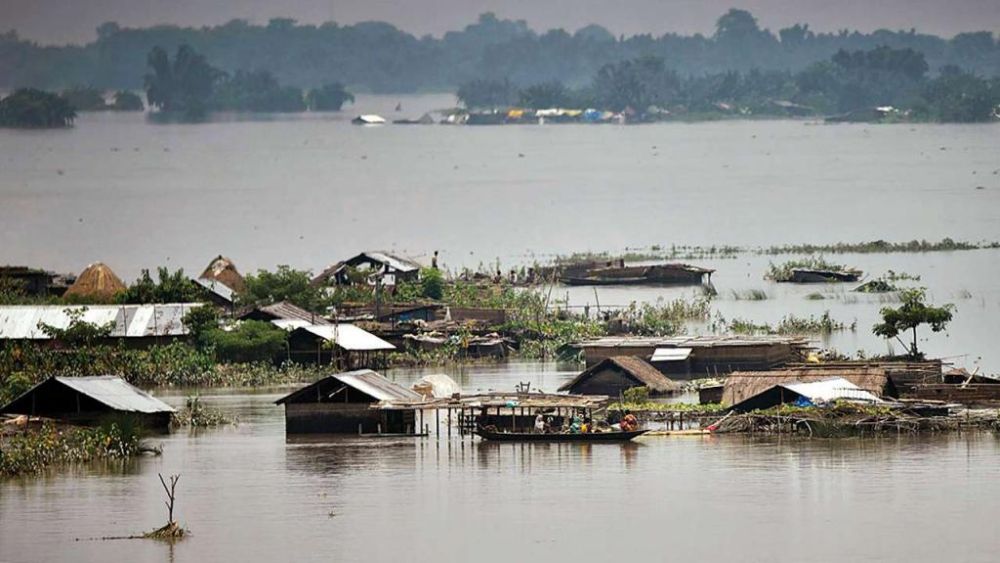
An aerial view of situation in Assam | Image: Twitter @BhaskarB0ruah
Over 34 lakh people in 26 of the 33 districts in the state are deeply affected by the devastating floods. The Brahmaputra and eight other rivers in the state are flowing above the danger level. According to the state disaster management body, about 3,371 villages are submerged under the floodwaters, and crops in over 1.28 lakh hectares have been destroyed.
As a fresh wave of floods ravages Assam, killing 73 and affecting nearly 40 lakh people across the state, 85 percent of the Kaziranga National Park and Tiger Reserve (KNPTR) remain waterlogged.
Assam Chief Minister Sarbananda Sonowal visited the park to assess the situation. So far, 125 animals have been rescued and 86 have died, including rhinos, deer and wild boar, in the sixth-worst flood since 1988.
Devastating Floods in Assam
The floods displaced many people and animals each year, and yet the annual deluge is considered necessary for the survival of the UNESCO World Heritage Site, which is a sanctuary to at least 2,400 one-horned rhinos.
More than 100 wild animals, including at least eight rare rhinos, have died in recent flooding at a national park in north-eastern India. The Kaziranga Park is home to the world’s largest population of the endangered species of one-horned rhinos. Various other animals including deer, buffalo, and porcupines have also died amid the floods.
But this year, monsoon rains have flooded around 85 percent of the park. The floods have killed over 200 people and displaced thousands in Assam, and neighbouring countries of Nepal and Bangladesh.
Hundreds of relief camps have been set up to shelter the people that have lost their homes to floodwaters. In the state of Bihar, rains have flooded villages and transport disrupted by the heavy rains.
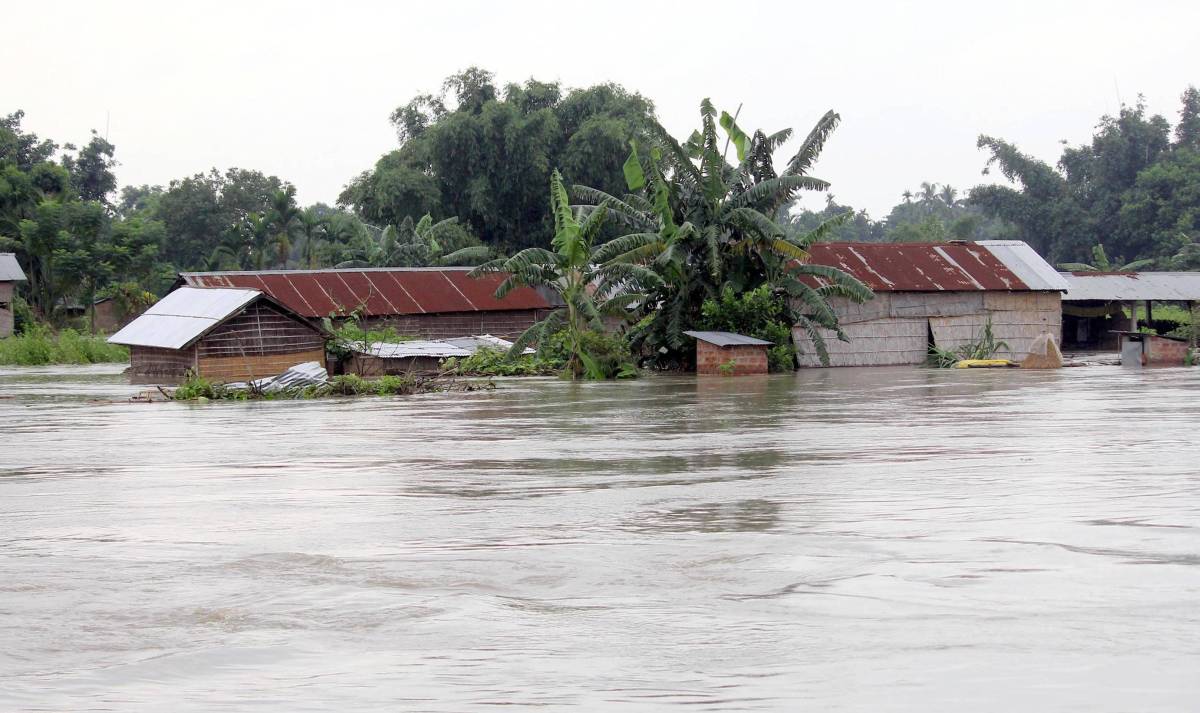
Image: DD News
Prime Minister Narendra Modi has assured all support to Assam in dealing with the flood situation. He interacted with the state Chief Minister, who asked all ministries of the state government to help the flood-affected people with every possible aid.
The rain-related death toll has reached 105. While 79 people have drowned or were washed away, 26 died in landslides. More than 200 embankments, 167 bridges, culverts, over 1600 roads across the state have been damaged in 30 districts of the state.
The water levels of Brahmaputra River and its tributaries are constantly rising, threatening to destroy everything in their wake. Western Assam’s Dhubri district continued to be the worst-affected district with 4.69 lakh people in makeshift camps of their own. Goalpara had 4.49 lakh affected people at the last count followed by Barpeta (3.55 lakh), Morigaon (3.52 lakh) and South Salmara (2.25 lakh).
The state has faced two waves of floods since May 22 affecting more than 53.5 lakh people across 30 of 33 districts. Several hundred villages have been entirely cut off by the flood waters, making relief and rescue work even tougher.
PPE Waste Worsening the Situation
The medical waste from hospitals and COVID Care Centres is getting accumulated in the floodwaters, adding to the worries of authorities and raising concerns of infection among people in flooded areas.
Officials of the Assam State Disaster Management Authority (ASDMA) have voiced concern over reports of discarded personal protection equipment kits, masks, blood pouches, syringes, and other hospital wastes amid floodwaters in some parts of the state.
Locals near Guwahati had filed complaints to authorities about such discarded waste floating into their compounds. Officials have revealed that a private firm has been assigned with the task of collecting and destroying such wastes, which had dumped it in the open instead of properly disposing it.
This could create a serious health crisis in the region. The authorities need to eliminate this threat as soon as the flood waters subside, or the region could fall prey to a plague.
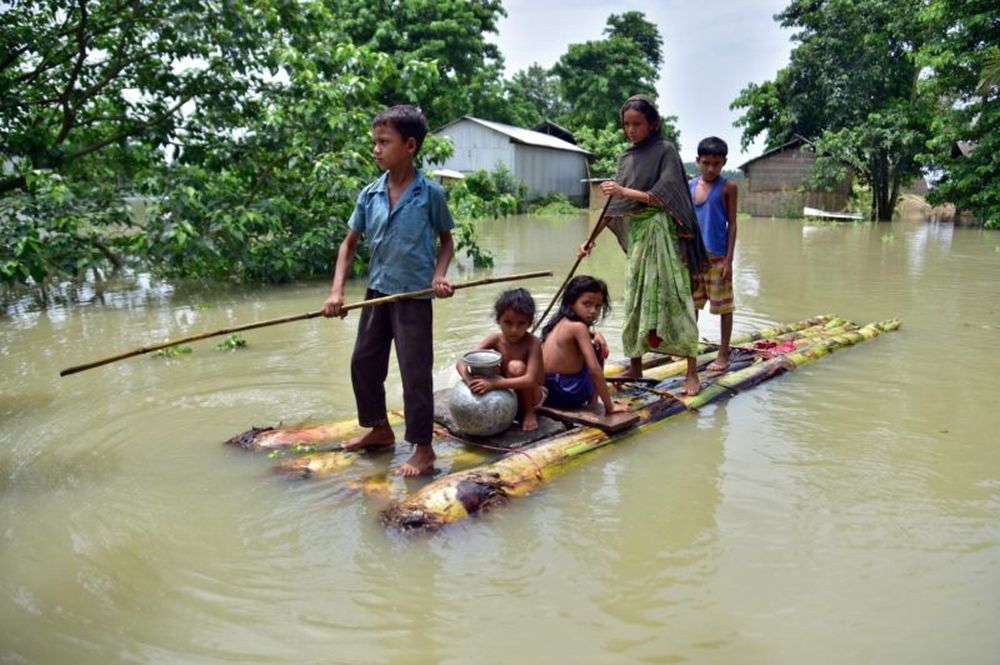
Villagers rowing a makeshift raft through a flooded field in Morigaon district, Assam | Image: Reuters
Importance of Floods
However, the role of floods in Kaziranga’s ecosystem is considered important. The experts believe that these annual floods are essential for Kaziranga by virtue of its ecosystem. Being a riverine ecosystem and not a solid landmass-based ecosystem, it won’t survive without an ample amount of water. The entire area of Kaziranga is formed by alluvial deposits from the surrounding rivers.
Assam is traditionally flood-prone, and 1,055 square kilometers KNPTR, which is located between the Brahmaputra River and the Karbi Anglong Hills, is no exception.
According to Uttam Saikia, Honorary Wildlife Warden of Kaziranga, this “floodplain ecosystem” has not only been formed by floods but also thrives on it. According to Saikia, floodwaters function as a breeding ground for fish.
The reoccurrence of floods helps stock up Kaziranga’s water resources and maintain its landscape, wetlands, grasslands, and semi-green deciduous forests. The floodwaters help in eliminating unwanted plants as well.
Except for 2018, the years between 2016 and 2020 have all witnessed high floods – the ones submerging over 60 percent of the park, killing and injuring hundreds of animals. Though animals adapt naturally to floods, when the waters hit a certain level, they gravitate towards safer, higher ground in the Karbi Anglong Hills.
While the two ecosystems of Kaziranga and Karbi Anglong were part of the same landscape, the animals now have to cross the busy National Highway 37 which cuts across the park. Over the years, the highway is getting highly difficult to cross through while migrating through the landscapes.
A few of the nine wildlife corridors on the highway, including Panbari, Haldibari, Bagori, Harmati, Kanchanjuri, Hatidandi, Deosur, Chirang and Amguri, are obstructed by traffic.
